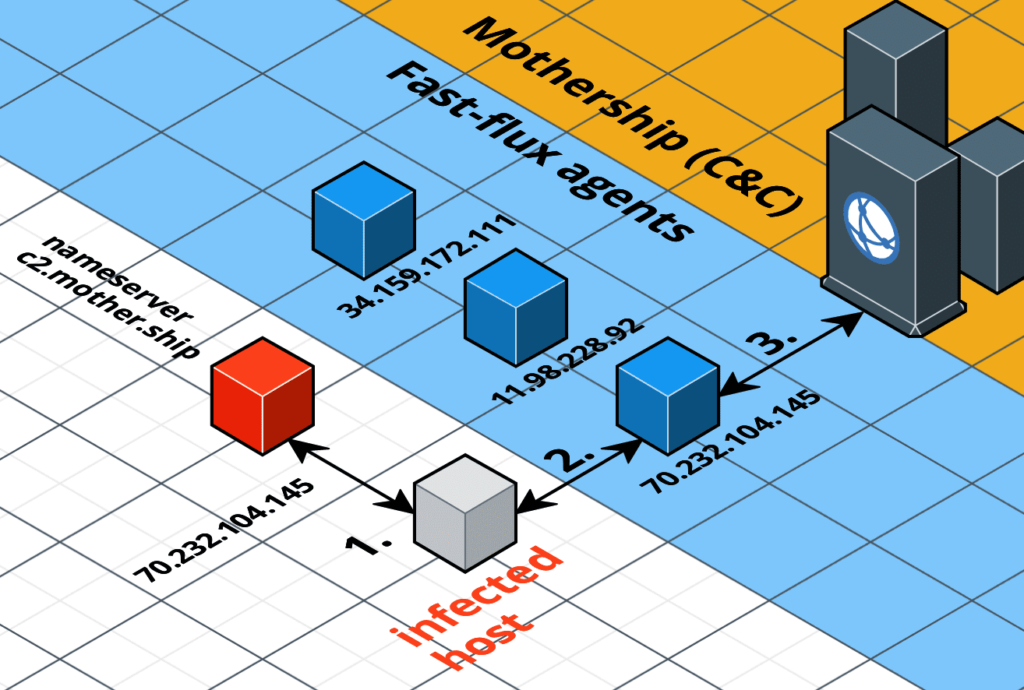

The request thus gets redirected to the target website. For example, the below figure shows that the victim request for and the browser are actually communicating with the flux network. For example, in the figure below we can see that in the case of normal client server communication, a normal end user agent like a web browser requests the server and the server fulfils the request of the client, whereas in a single flux network, the end user agent like a web browser communication with the server is proxied via a redirector normally called a flux-bot. Single flux networks: These are networks in which a set of compromised nodes register and deregister their address as a part of DNS address record list for a single DNS name. Types of Flux Networksįast Flux networks are classified under 2 major categories:

They often use a load-distribution scheme which takes into account node health-check results, so that unresponsive nodes are taken out of flux and content availability is always maintained. In addition, the attackers ensure that the compromised systems they are using to host their scams have the best possible bandwidth and service availability. Essentially, the domain names and URLs for advertised content no longer resolve to the IP address of a specific server, but instead fluctuate amongst many front end redirectors or proxies, which then in turn forward content to another group of backend servers. Instead, compromised front end systems are merely deployed as redirectors called as flux agents funnel requests and data to and from other backend servers, which actually serve the content. The large pool of rotating IP addresses are not the final destination of the request for the content. browser connecting to the same website every 3 minutes would actually be connecting to a different infected computer each time. Website hostnames may be associated with a new set of IP addresses as often as every 3 minutes, which means that the end user client i.e. These IP addresses are swapped in and out of flux with extreme frequency, using a combination of round-robin IP addresses and a very short Time-To-Live (TTL) for any given particular DNS Resource Record (RR). Just providing additional information as this seems to effect more than just the 'pipes' mod.The basic idea behind Fast Flux is to have numerous IP addresses associated with a single fully qualified domain name, where the IP addresses are swapped in and out with extremely high frequency through changing DNS records.
#Flux networks mod
Nor is it your obligation to change your mod so that it works with specific modpacks etc. Note to the mod author: I fully realize you may keep the current flux plug functionality, and this may never work again. So far I haven't had any compatibility issues with FTB Revelations 3.50 but do be sure to backup your saves folks. To that end I've temporarily solved this by downgrading to fluxnetworks-1.12.2-3.0.19-21. I imagine this isn't a huge priority, I just want to add some info and perhaps act as a lighthouse for any FTB Revelations players wondering why they suddenly don't have power.
#Flux networks update
I've seen some posts on reddit wondering why it's suddenly broken, I decided to look for the source of the issue and found that it was the update to flux networks. Usually I wouldn't care too too much but I know this effects players who've just updated to FTB Revelations 3.5.0, since a number of people who play that pack have been using this method of power generation. Energy Bees housed in said blocks could then transfer their power to the plug. It used to be possible(FluxNetworks 1.12.2-3.0.19-21) to connect a flux plug up to an Alveary (Forestry), Apiary (Forestry), Industrial Apiary(Gendustry) etc. I believe this is also effecting the Energy Bee from the 'Career Bees' mod.


 0 kommentar(er)
0 kommentar(er)
